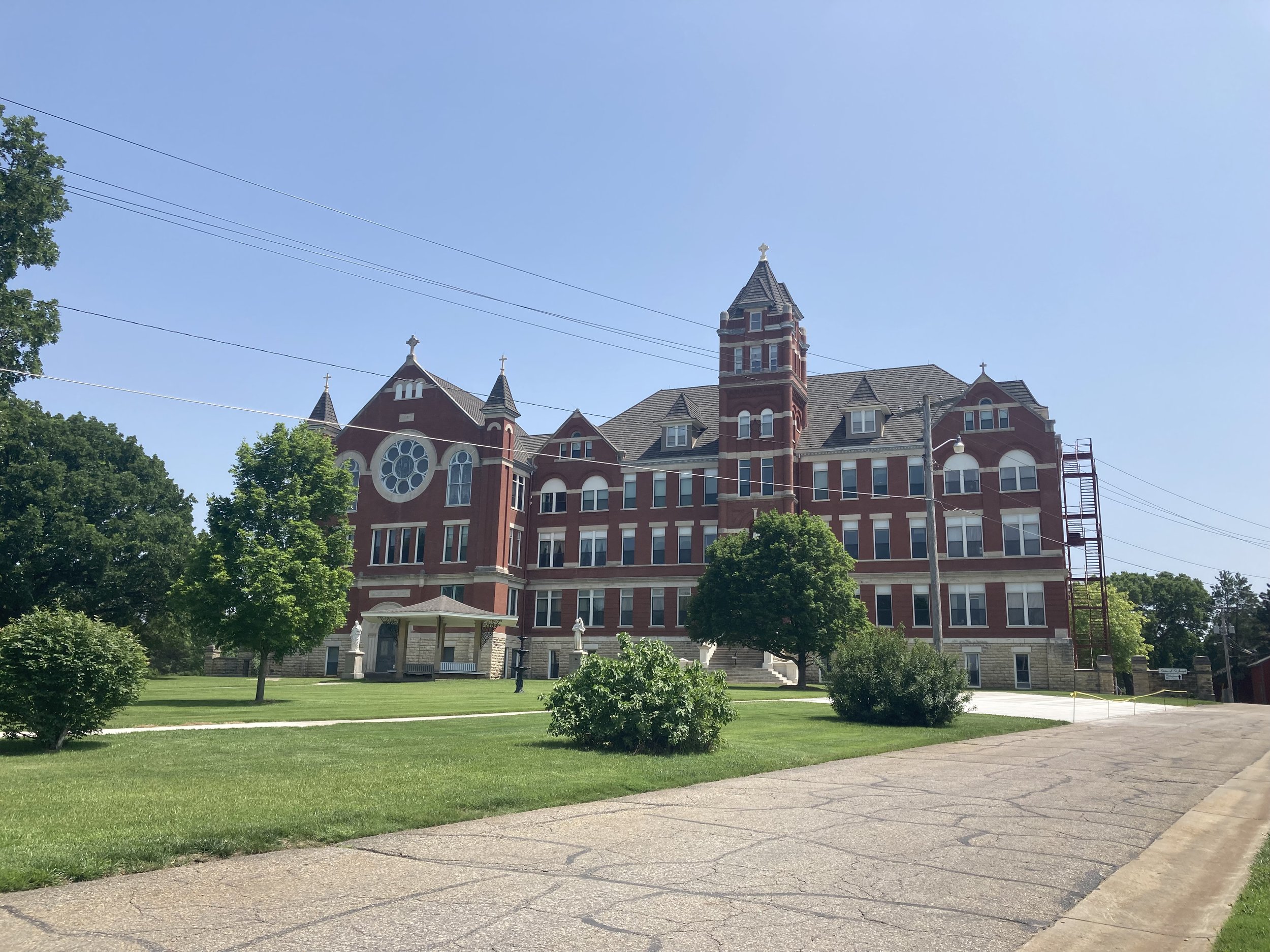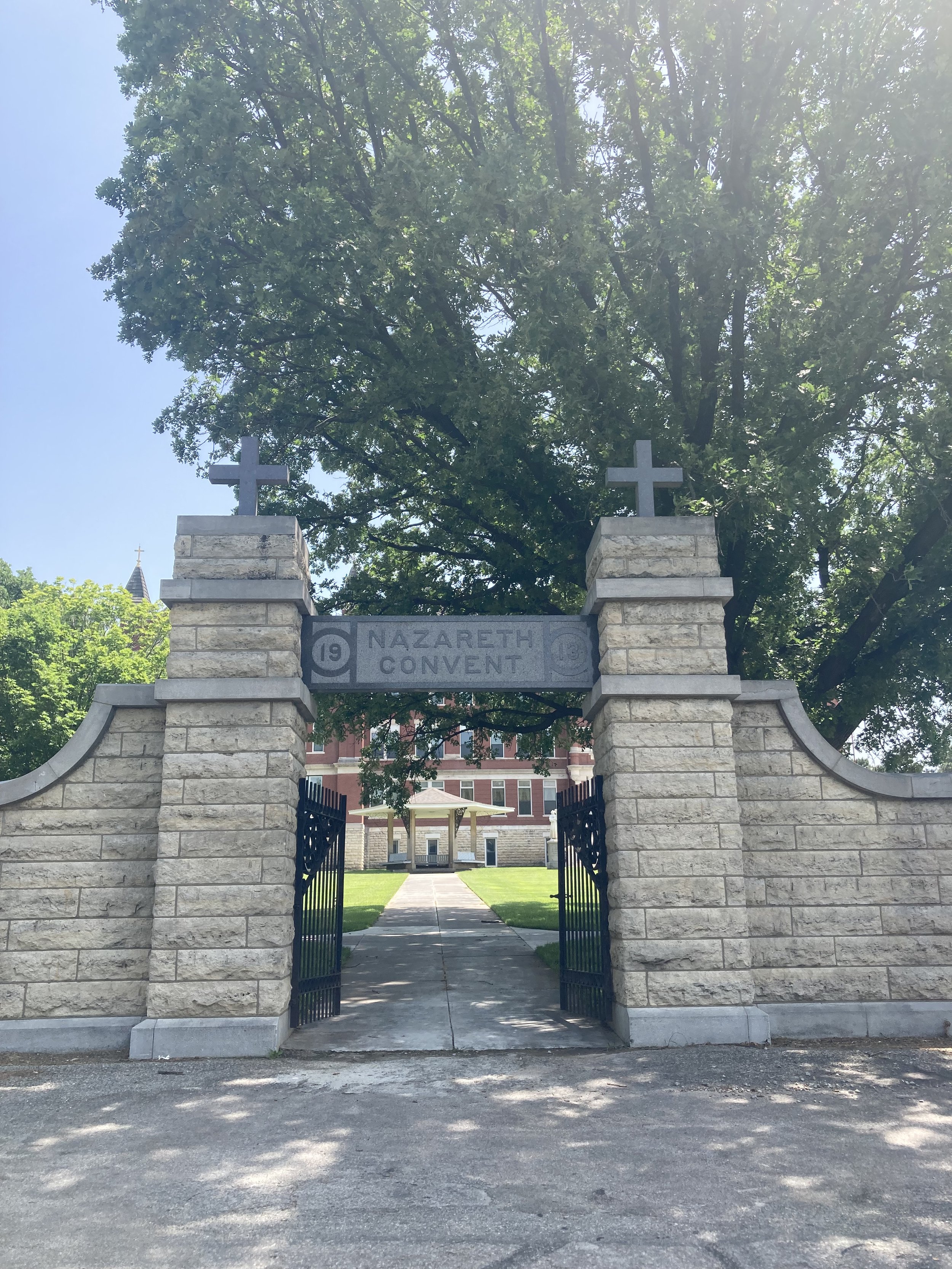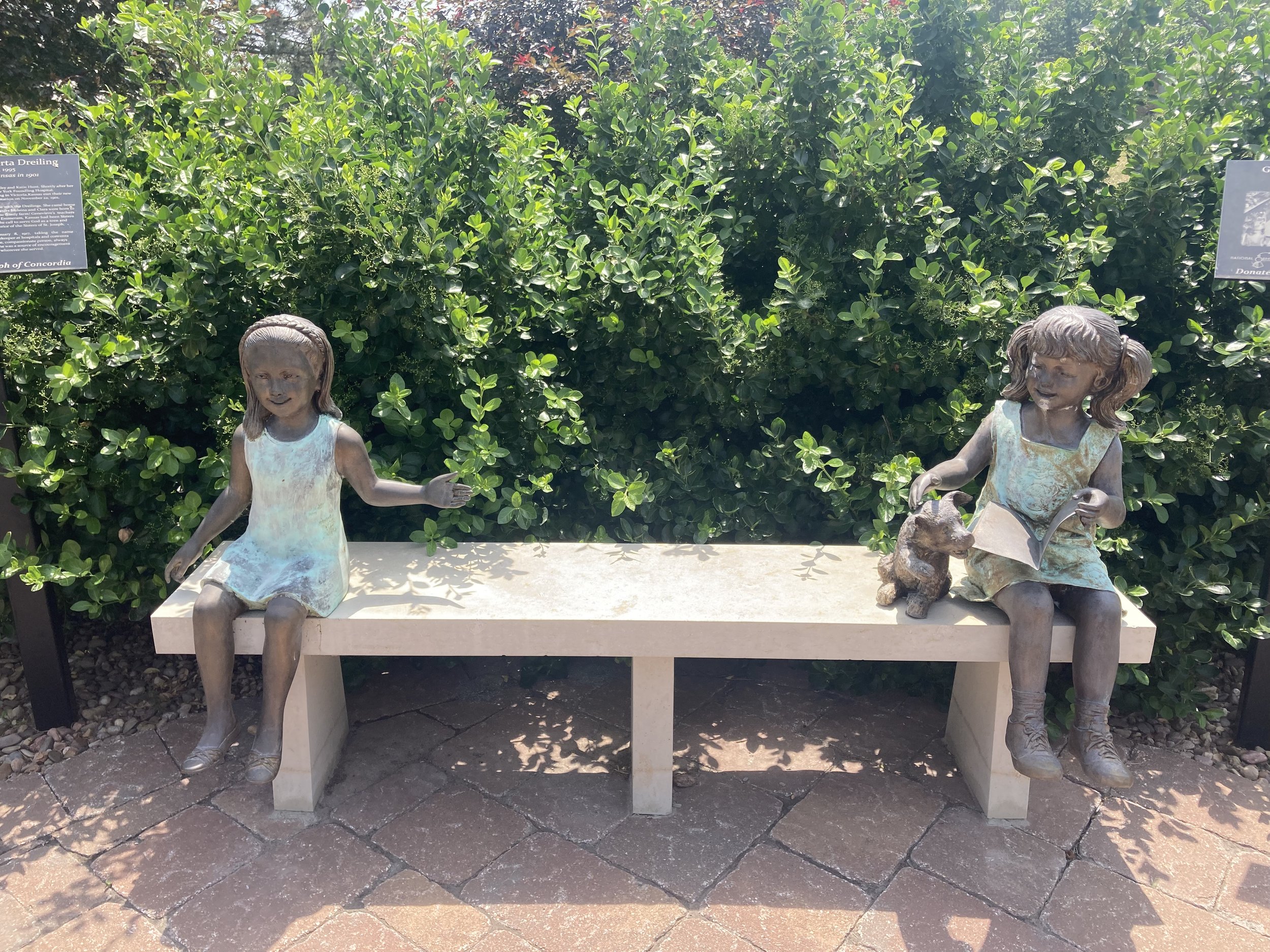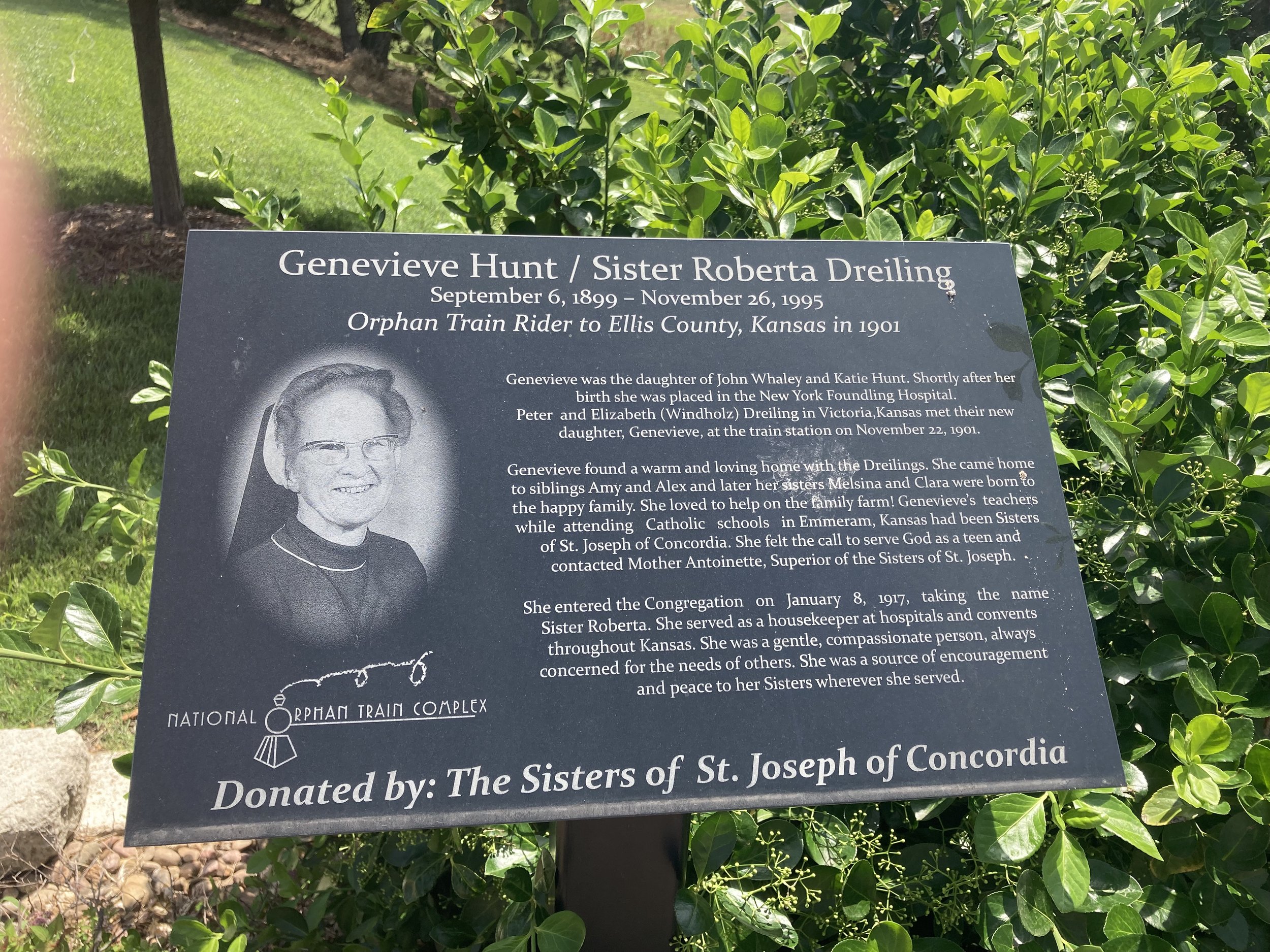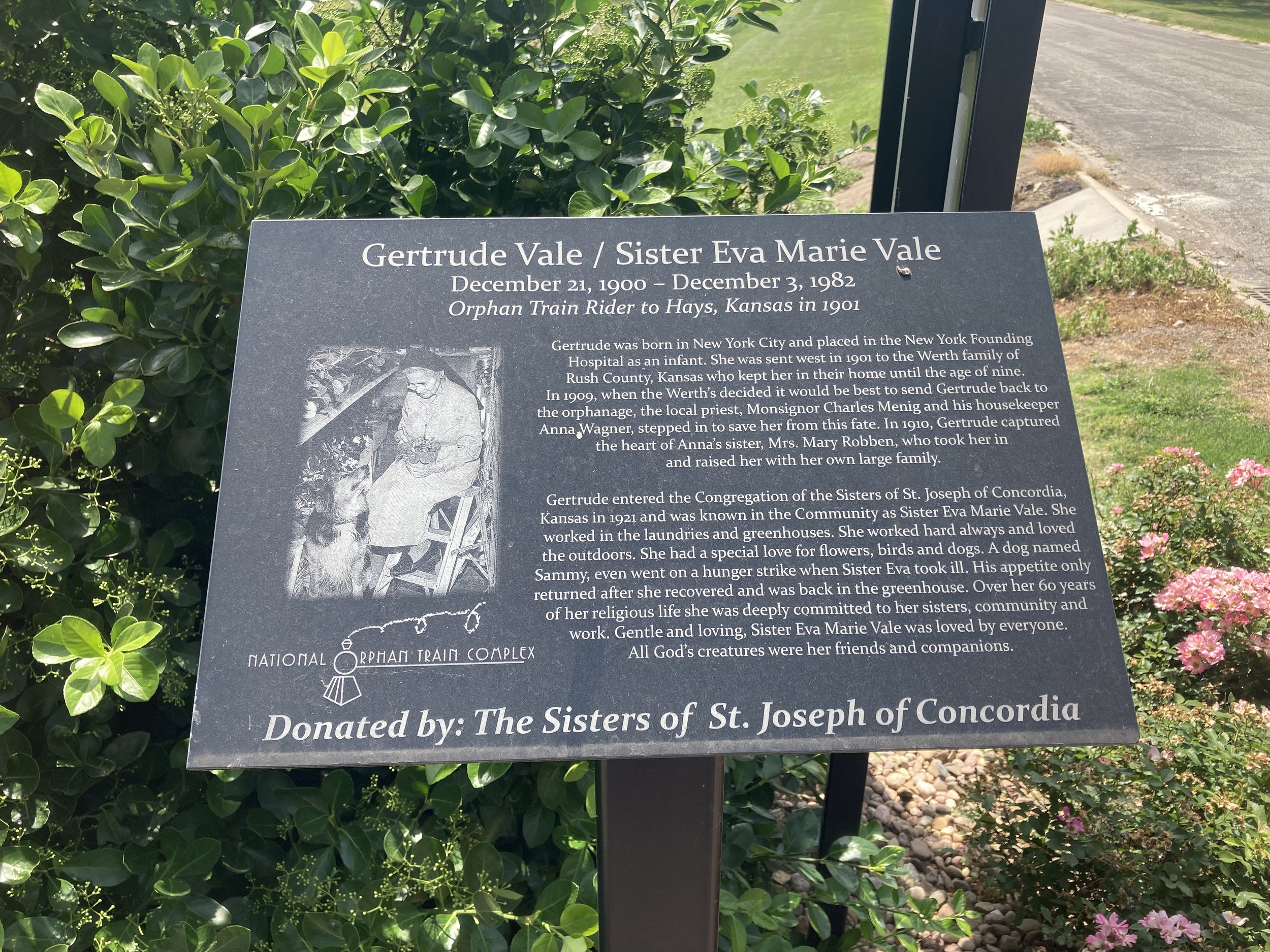National Orphan Train Complex: Giving a Voice to the Riders of the Orphan Trains
Concordia, Kansas
In the 1800s and early 1900s, New York City and other large cities had orphanages filled with children looking for families. The Children’s Aid Society’s solution was to create orphan trains that would take these children looking for families to families in the midwest and other parts of the United States. Kansas was one of the states were many children were placed with families. The National Orphan Train Complex works to educate visitors about the experiences of these children.
When visitors first arrive at the museum, they will be shown to a room where they will see a video about the orphan trains and about the work of the museum. The guides there will then provide visitors with information about the other two buildings that visitors will visit. I found the guides at the museum to be very friendly and knowledgeable. If you have question about the orphan train after visiting the exhibits, I would encourage you to ask the guides. The first place that I went to after visiting the main complex was the building with all the exhibits. The exhibits tell the stories of the many children who rode the orphan train in hopes of finding good families.
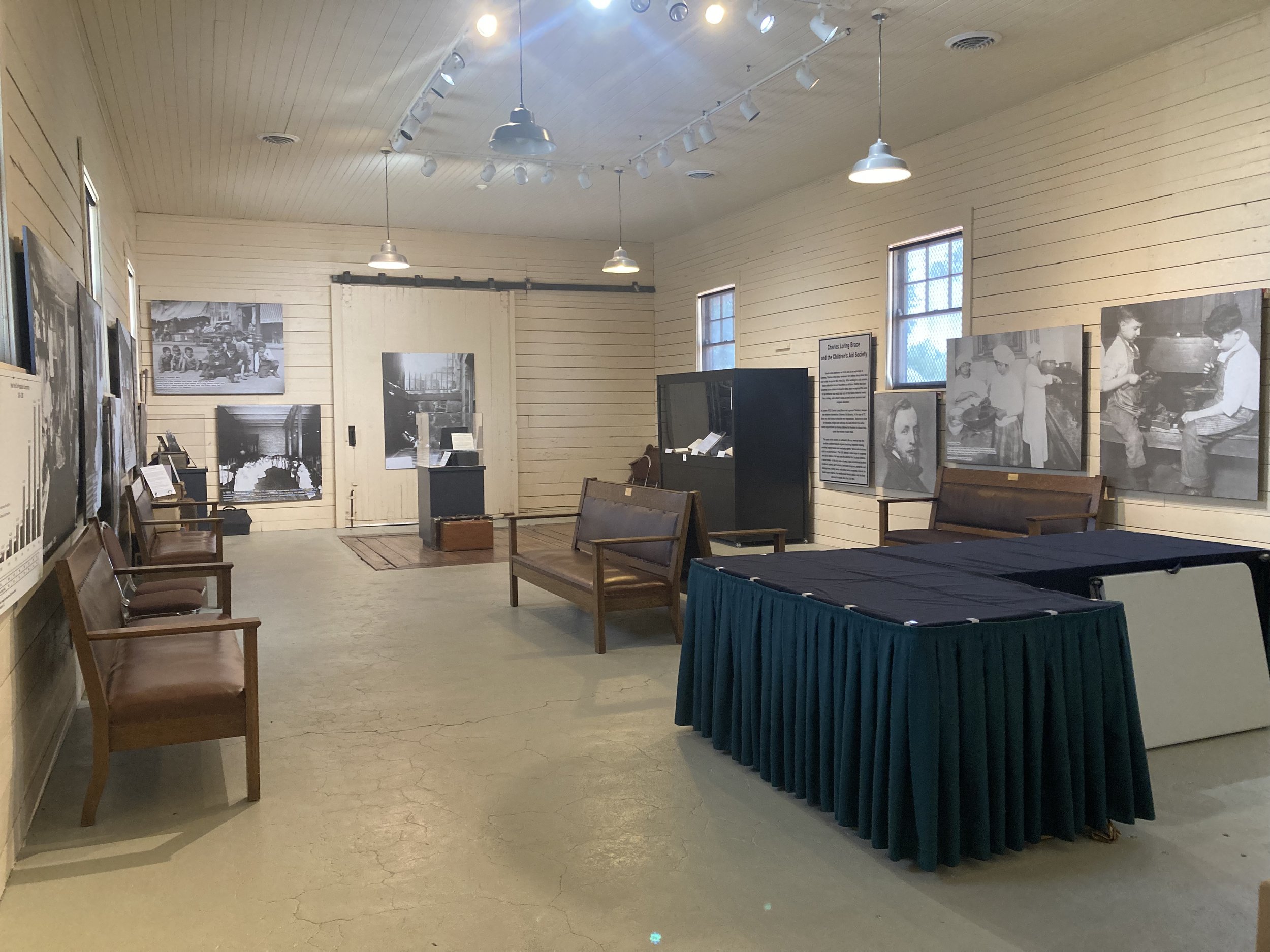
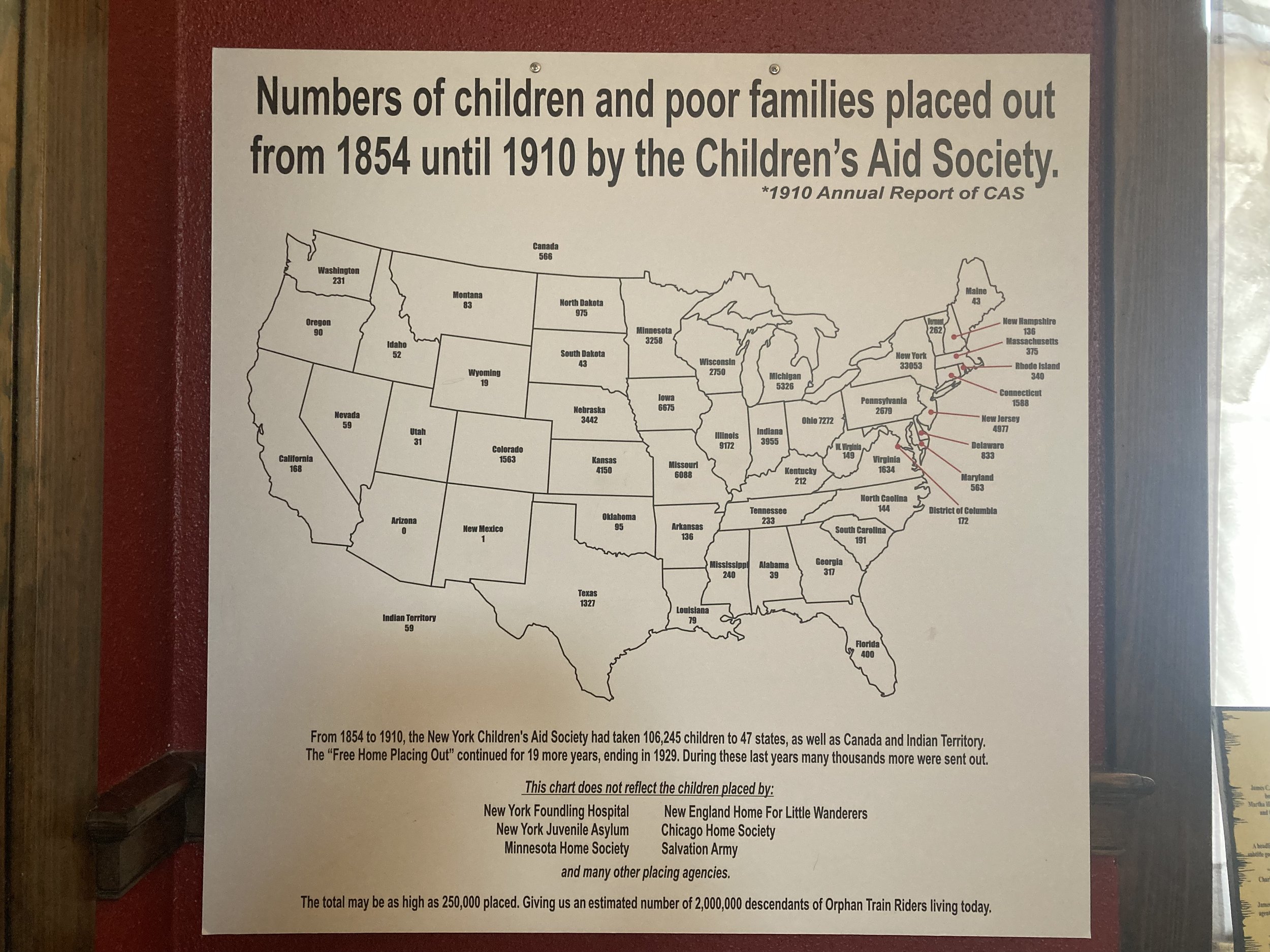
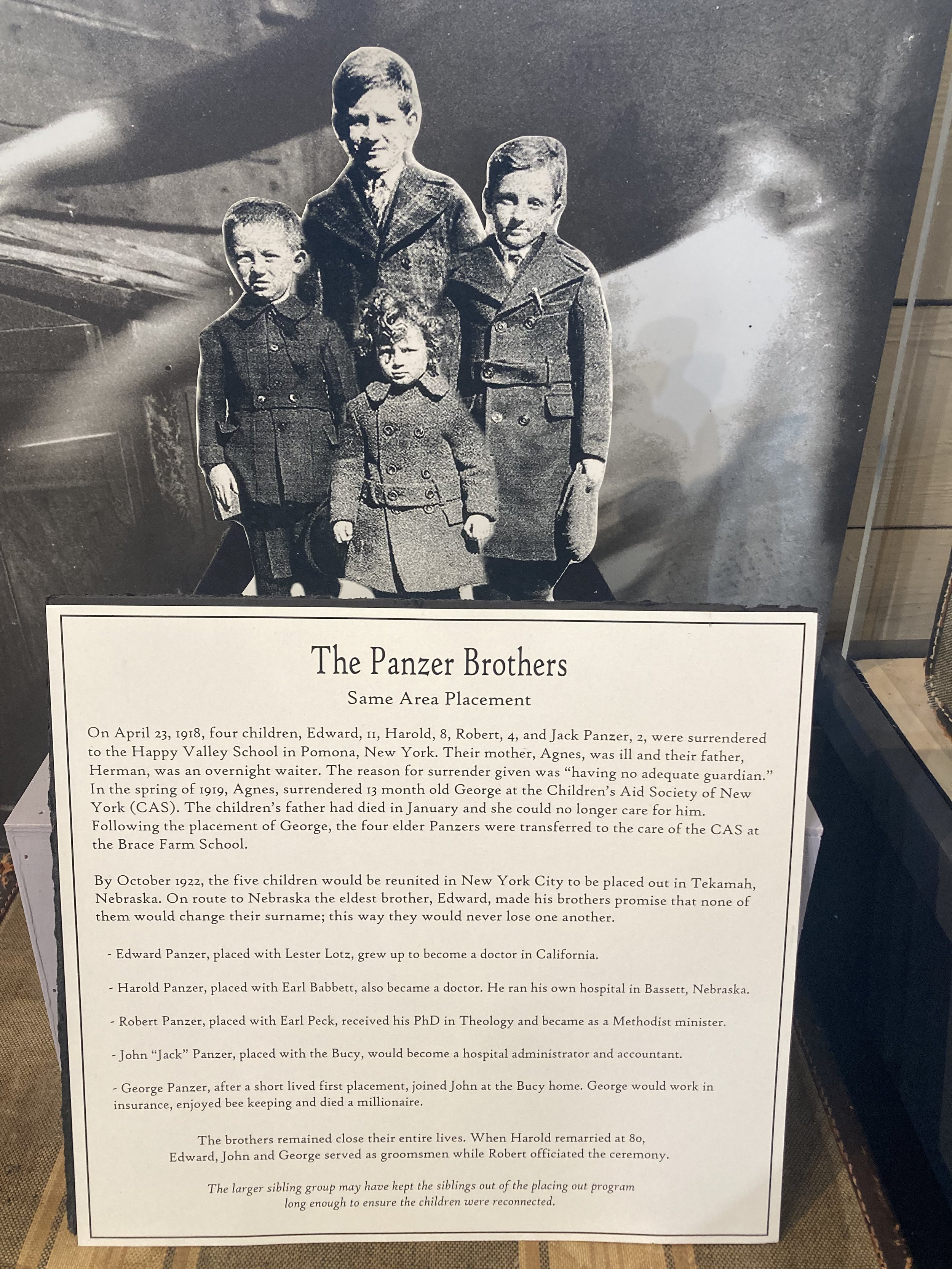
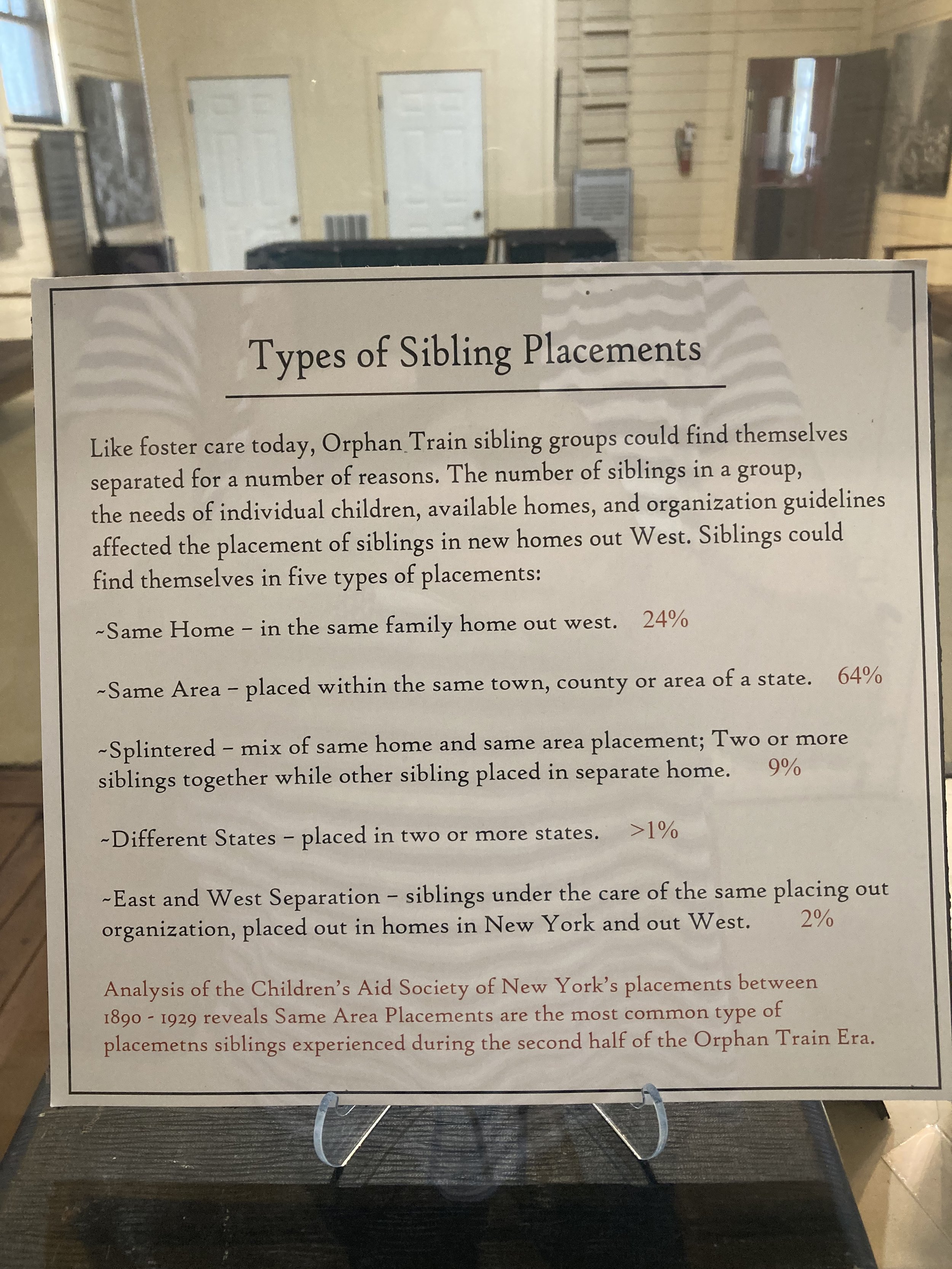
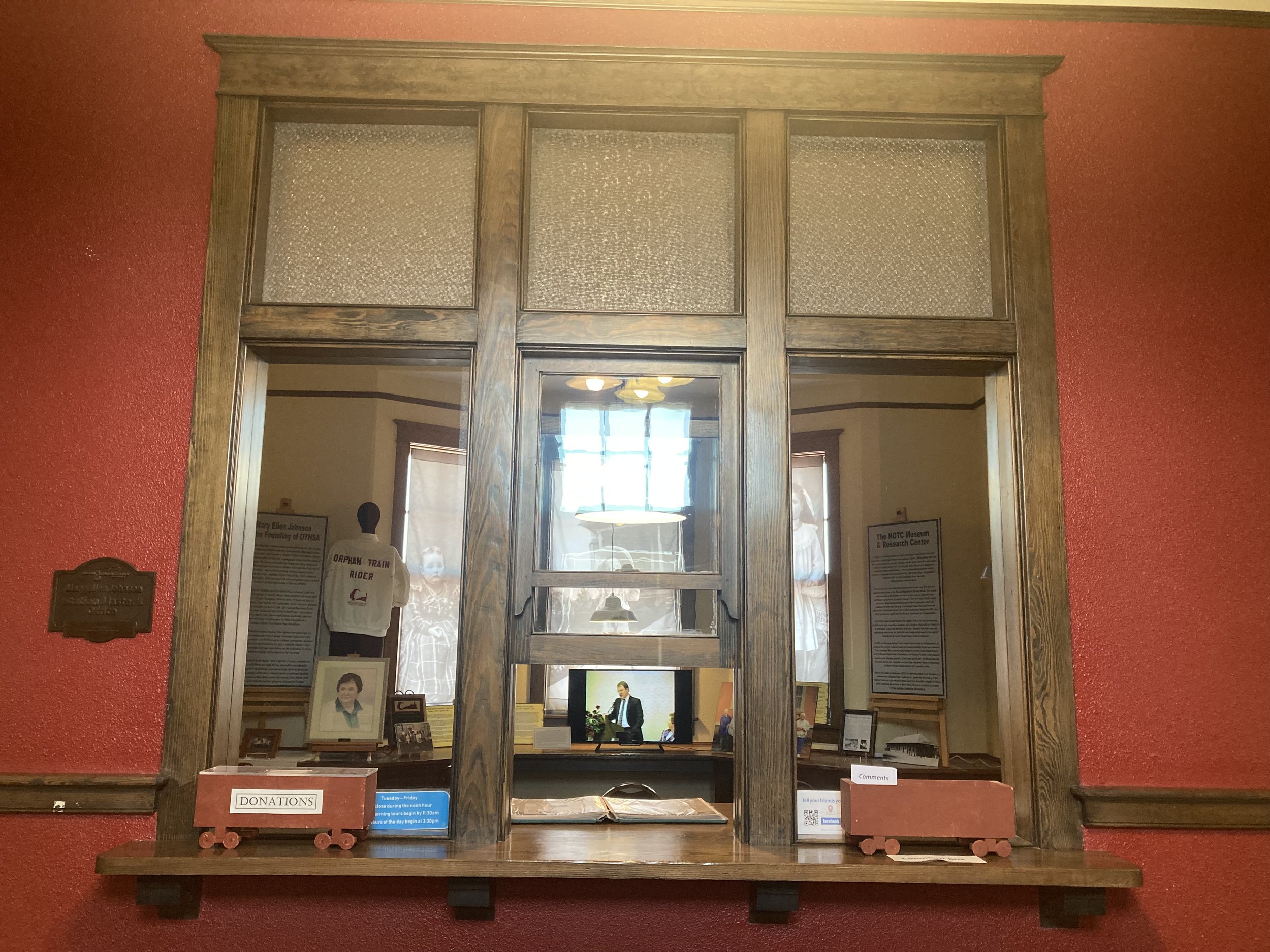
After leaving the room with the exhibits, visitors can visit the building with a train car similar to what children on the orphan train would have rode on.
The Orphan Train Town Statues are statues of children who rode the orphan train. The statues are around the train complex and around the town of Concordia. For each statue, there is a sign providing background information about the child or children represented by the statue.
Resources
A Family Apart by Joan Lowery Nixon lesson plans- The National Orphan Train Complex has lesson plan and ideas for the book A Family Apart. This is the first book of a seven book series.
Beyond the Orphan Train series- Another children’s historical fiction series based on the orphan train.
Britannica Kids (orphan train program)- This link provides information for students about the orphan train program.
Orphan Train Washington Post article- An article written by the Washington Post about the orphan train.
The Brave Journey of an Orphan Train Rider- An author and historian shares the experiences of one of his relatives who was an orphan train rider.
Adoption can be a difficult topic for children and young adults. This does not mean that the topic should be avoided. However, it is important to know your children and students, and be aware of the topics that can be triggering for them. Students may need time to discuss and process if they are working through a unit or book focused on the orphan train.
Activities
Have students research the story of a child who rode on the orphan train. Students can write journal entries from the child’s point of view.
Have students pack one suitcase with the things that they would pack if they were moving to a new home. Discuss with students that children on the orphan train were only allowed to take one suitcase with them to their new home.
Students can build a train car similar to the train cars that were used for the orphan train.
Essential Questions for Students to Research and Answer:
(1) What was happening in larger cities that made the orphan trains necessary?
(2) If you had been in leadership in one of the larger cities during the late 1800s and early 1900s, what would you have proposed to provide homes for children who needed homes?
(3) What were some of the benefits for children who rode the orphan train and what were some of the negative outcomes for children who rode the orphan train?
A tip from someone who has been there.
As I was leaving Concordia, I saw signs for a Nazareth Convent that sounded interesting to me. The convent is now a home for sisters who have retired from ministry. In the US, I don’t think it is common to see convents, so I thought it was cool to see this. I think the convent offers tours. If I visit Concordia again, I will try to do this tour.
